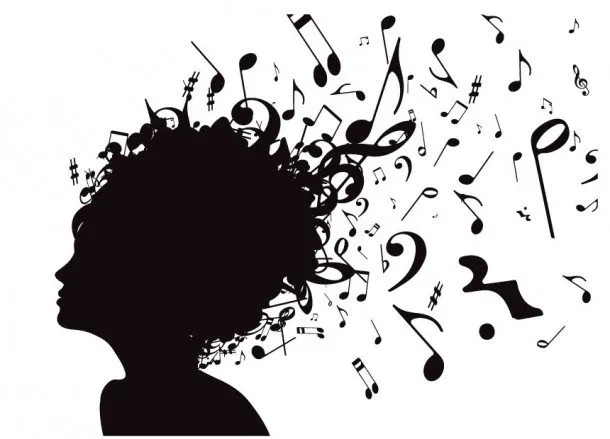
Cultural appropriation would neither work nor matter if it didn’t sell. It is those supporting it that make it vile. There is a racist market for such theft.
When Pat Boone whitened music by Little Richard or Chuck Berry, that was his take on those things. That his version sold while records by black performers remained unpromoted and languished in black-only stores only shows how racist America was and remains.
Racists trusted Boone and his ilk to make music safe by removing that terrifying jungle beat. Racists trusted Boone and his ilk to perform on their TVs and stages without the need for race riots or lynchings. No cross of fire needed to burn when the performer and audience remained all-white all the time. No urge to dance more than a Lawrence Welk waltz or polka arose.
Defending originators and their under-represented experiences and views, cultural appropriation became an artistic crime. A needed rebellion against being marginalized and ignored among non-white groups, cultural appropriation quickly devolved into a cudgel to flatten anyone who explored cultures other than their own. Men can’t write about women. Whites can’t write about blacks. On and on the restrictions goose-stepped. A work’s validity began being judged not by content but consonance between originator and subject matter, between research and referents.
Lost amidst this revisionist fervor is the fact that exploring other societies, cultures, and experiences is what makes for peace. It leads to understanding. If a racist spews forth a racist screed it can safely be ridiculed and ignored.
If Alex Haley writes Roots it can teach us all about how slavery shaped racist America and the world. You needn’t be black to read The Color Purple and Alice Walker has much to say to any human being. To say we can create only from our own direct personal experiences is censorship. It denies what creating art is fueled by and centered on, which is exploring the world in hopes of making it our own.
Bad writing, unconvincing narratives, and plain propaganda disqualifies any work from serious consideration. Let’s make such distinctions instead of going the simplistic route of banning and barring according to category or dangly bits, skin color or accent.
Appropriation is the key word so often elided. It means theft. It means taking someone else’s without permission, to use as one’s own. It is a form of fraud. This should always be scorned. Cast out all such poseurs. They are thieves and liars. Their work shouldn’t sell and they shouldn’t prosper.
That so often they do speaks more to audience than performer. How can society accept such egregious extremism and make it a norm? Such spew should be laughed at or ignored.
However, if the work in question merely explores beyond the originator’s birthright or experience, our analysis must shift to whether the work is convincing, sincere, and persuasive. Is it of literary merit at prose level and in thematic terms? Does it ask questions that delve deeper into differences to find commonalities?
If Willian Styron writes Sophie’s Choice, are we to yell cultural appropriation on the grounds that he wasn’t a Polish woman in a death camp? How dare a male white American present such guff? Again, the answer is in the work. Is it persuasive, accurate historically, and well-presented? Is it human? Does it touch on themes all people can empathize with?
Cultural appropriation is, remember, culture theft, not exploration, not humanity seeking to understand human actions.
It’s one thing to have lofty goals. It’s another thing to let such goals make simplistic, categorical thinking a mode of theory application. If we apply reason instead of categorical binary judgment to each work on its own terms we will learn tolerance and encourage exploration.
If a Jamaican-born writer such as Zadie Smith wishes to examine white privilege, (and teeth), by writing about those who enjoy it, we need to accept the effort as is and examine it for genuine humanity, insight, and curiosity.
Bigotry needs pruned from the discussion of cultural appropriation, with perhaps a term change. Why not call it more bluntly culture theft.
If someone falsely claims a given heritage and presumes then to speak for it, that’s fraud and needs called out.
If an artist chooses to reach beyond a home-based palette to explore vibrant colors and forms found elsewhere, that’s cross-pollination and enhances culture.
If a creator absorbs and transforms artistic modes from elsewhere, from those unlike self, then we need to assess the art apart from the artist and ask if it stands in legitimate light.
Picasso, a Spaniard, cast a wide net when absorbing influences. Did he appropriate other culture? No, he transformed what he learned and elevated it to make it his own. That’s how art grows.

When The Handmaid’s Tale came out, Margaret Atwood was accused by science fiction — as a socio-political body — of cultural appropriation. She stole tropes and topoi from science fiction for her literary novel, they whined. She denies that her work is “mere” science fiction in interviews. It wasn’t science fiction at all, she insisted.
Science fiction howled. They were as a non-cohesive body in fact butt-hurt because her work, written elegantly, sold to a market that avoided buying science fiction labeled as such, a much larger market than genre fiction ever reaches. That’s what stung, along with her careful denials of writing genre fiction, which she in fact does not.
Nor does William Gibson, although he’s counted among science fiction’s greats. His work is mainstream regardless of topics being explored.
Margaret Atwood continues to this day to upset a coterie of science fiction fans, iditors, and writers. None of this means there aren’t science fiction novels every bit as good, as worthy of wider attention, as their literary cousins. There are. Quality respects no genre or category. Good writing can be found anywhere regardless of the label it may wear.
When the Beatles covered songs by Little Richard or Chuck Berry they did so as praise and talked about the originals as much as possible. They boosted the signal of suppressed artists. They linked names to songs in public awareness, no doubt leading many to go exploring, to absorb, and to grow appreciative of a culture long denied them by racist marketing.

In high school I knew a girl who adored John Denver, who did a cover of “Mother Nature’s Son”. It was her favorite song from one of his albums. When my friends and I told her it was a Paul McCartney song, she refused to believe us. Called us Beatle Freaks.
Next day we brought in copies of the white album to show her, on the label, the (Lennon-McCartney) by-line. This did nothing to persuade her. We asked that she bring in her John Denver album — none of us owned one — so she did next day. On it, we pointed to the song’s credits. (Lennon-McCartney) it said, not (John Denver).
Finally more or less convinced, she told us Denver had taken a crap rock-and-roll song and made it better in a folk mode. She “hated” rock-and-roll and “loved” folk, or “country” music, you see.
We went to a record player and when she heard McCartney’s version she finally realized maybe the Beatles had more to them than “yeah, yeah, yeah”. It took us a lot of effort but we made our point, which was to not prejudge before giving something a chance.
As rockers, we “hated” disco, yet there was “Fame” by Bowie, which we loved. There were other songs, too. Maturity allows such admissions.
Now imagine how closed-minded most of racist America was, and remains, against artists different from themselves. Also remember white kids adopting black culture as a way of escaping a stifling beige existence. They craved references and slang new to them, baffling and scary to their parents, teachers, and other familiar authority figures.
It was kids reaching across divides that allowed music to advance.
Look how many musicians have achieved success cross-pollinating cultural influences, from Santana to Red Hot Chili Peppers, from Aretha to Prince. They broke down the barriers and brought people together by openly celebrating differences instead of trying to pretend they were something they were not.
Getting over those fences and walls is difficult. Tearing them down is imperative. Being beyond a comfort zone teaches new joys.
Culture theft sucks. Cultural integration is to be celebrated.
Go explore.
///

